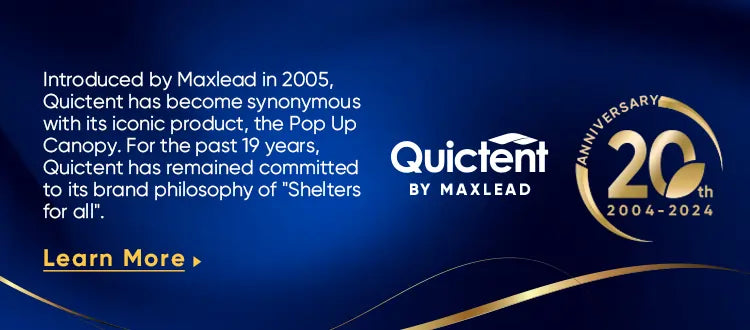Your houseplants are growing in a grow tent or greenhouse. Indoors, plants lack natural light. To solve the light problem, you need plant grow lights as a supplement. This blog brings you some inspiration on the option and use of grow lights.
Why use a plant grow light?
With plant grow lights, we can grow any plant indoors regardless of the season.
There are three most frequently mentioned uses for plant grow lights: extra light, seedling help, and plant growth.

(houseplants and grow lights)
Extra light: Indoor plants lack light and plant grow lights provide a light supplement. In winter, when plants are moved into a greenhouse or grow tent, grow lights can simulate outdoor light conditions.
Seedling help: Growing plants indoors from the seedling stage. Grow lights provide extra light and warmth for seedlings.
Plant Growing: You have an indoor garden for growing vegetables, herbs, or flowers. Plants cannot grow without light, water, and the right temperature. Growth lights provide enough light for plants.
If you want to harvest your plants multiple times a year and reap the economic benefits, a grow light is a must-have tool for you to promote plant growth.
Types of plant grow lights
About spectrum and light intensity
Spectrum: Plants have different lighting needs, and different colors of light affect plants differently.
Light intensity: The light intensity can be weak or strong. Watts and lumens are the two reference values to look for when buying grow lights.
Three basic types of grow lights
LED grow lights: In recent years, led grow lights have become popular with many gardeners.

(plants under led light)
These grow lights have many advantages, including lower energy consumption and are more cost- effective. Although LEDs are more expensive, they last longer.
Fluorescent lights: Fluorescent lights are the most commonly used grow lights. Fluorescent lights are less expensive and can provide the right amount of light indoors. However, the heat provided by fluorescent lamps is limited.
High-Intensity Discharge (HID): Metal halide (MH) and high-pressure sodium (HPS) are the two main types of HID. HID lamps provide the highest light intensity, but these lamps are expensive.
 (High Intensity Discharge)
(High Intensity Discharge)
If you simply want to buy grow lights for hobby gardening, HID lights are not the ideal choice.
Grow lights for greenhouse
Lighting needs in the greenhouse
Not all grow lights are suitable for use in greenhouses. In a greenhouse environment, the situation will be different.

(grow lights for greenhouse)
Long-lasting and energy-efficient. Grow lights in a greenhouse should be long-lasting and energy efficient. Greenhouse gardeners want the grow lights they choose to last a long time. Energy efficient grow lights are not only cost-effective but also good for the environment.
Waterproof. The grow lights you purchase for your greenhouse must be waterproof. This is because you will be watering your plants frequently and the humidity level in the greenhouse may remain relatively high. If grow lights are not properly sealed, they will be exposed to moisture and thus malfunction. Therefore, grow lights designed for greenhouses must be highly waterproof.
High-intensity. This does not apply to all greenhouses. If you just want to cultivate greenhouse plants as a hobby, a grow light of general intensity is enough. 8'x6' greenhouse, 8'x10' greenhouse, and 10'x20' greenhouse are common backyard greenhouse sizes.
(8x10 large greenhouse)
But if you want to profit from your greenhouse, then you need high-intensity grow lights to promote crop growth and increase yields.
Recommended grow lights for greenhouse plants
High-pressure sodium grow light
Sodium grow lights are a common type of grow light. This grow light emits more orange and red light. High-pressure sodium lamps promote plant germination and flowering and are often used later in the plant growth cycle. Sodium lamps work better in combination with natural light.
It should be noted that high-pressure sodium grow lights should be installed 30 to 36 inches above the plant.
LED Plant Grow Lights
LED plant grow lights are very durable, typically lasting up to 45,000 hours. LED plant grow lights are more efficient than regular grow lights. These plants grow lights are suitable for use in greenhouses and have the advantage of saving energy and requiring no warm-up time. LED plant grow lights do not contain mercury and are more environmentally friendly compared to other grow lights.
T5 Greenhouse Plant Grow Light
T5 plant grow lights are becoming the most popular greenhouse grow lights. These grow lights consume less energy and can last up to 40,000 hours. t5 greenhouse grow lights are environmentally friendly and ideal for greenhouse environments.
 (indoor plants)
(indoor plants)
The T5 greenhouse grow light emits a very high lumen output and full-spectrum light, making it ideal for young plants at the seedling stage.
Grow lights for grow tents
Best Plant Grow Light Option
The LED plant grow light is the most suitable light supplement for the grow tent. The grow light provides plants with the precise spectrum needed for all stages of the growth cycle. Moreover, it consumes less energy and is friendly to the environment.
How to choose the right LED plant grow light for grow tent?
The size of grow tent
The size of the plant grow tent is one of the factors you must consider before buying LED plant grow lights. Smaller and lower output LED grow lights are suitable for smaller grow tents.

(8x4x6 grow tent)
Typically, a 2' x 2' grow tent is the smaller size option. 4'x 4' grow tent is a common choice for indoor home growing, and a grow tent of this size is suitable for most plants.
If you determine the size of your grow tent, you can then measure the wattage of LED grow lights that will be suitable for your grow tent.
The following table is the LED grow light wattage recommendations for different sizes of grow tents:
|
Grow tent size (ft)
|
LED grow light total power |
| 2'x2' | 200 |
| 4'x4' | 500 |
| 4'x8' | 1000 |
| 6'x6' | 1200 |
Plant type
Plants are divided into strong light plants and low light plants according to their light requirements. Strong light plants require more light to bloom or produce fruit. Low-light plants will wither or even die if exposed to strong light. Tomatoes are strong-light plants, while lettuce is a low-light plant. Before you buy any of the led grow lights, you should plan the plants you will grow.
How many plants to grow in the grow tent?
If you grow many plants in the same grow tent, they may be crowded together. Plant growth is limited by space and the leaves may overlap each other, which can lead to insufficient light.
 (potted plants in grow tent)
(potted plants in grow tent)
For healthy plant growth, you need at least about 1 square foot of space between each plant. In a grow tent, leave enough growing space for your plants to get light evenly.
Which growing stage is the grow tent for?
Do you just want to put plants in a grow tent at some stage? If your grow tent should only be used for a certain growth stage, you will have more options for led grow lights. The spectrum and power of your LED grow light only need to meet a specific stage, for example, blue light is good for plant growth, and red light is good for flowering.
If the plants will always be in this planting tent, you have more to consider. The LED grow light you need must be full-spectrum to meet the needs of each stage. Adjustable LED grow lights are ideal for you.
Conclusion
Healthy plant growth requires plenty of light. For indoor plants, grow lights are an important light supplement. In greenhouses or planting tents, you have different needs for grow lights in different situations. Don't buy any grow light because of impulse, you have to choose the most suitable product for you according to your gardening needs.








